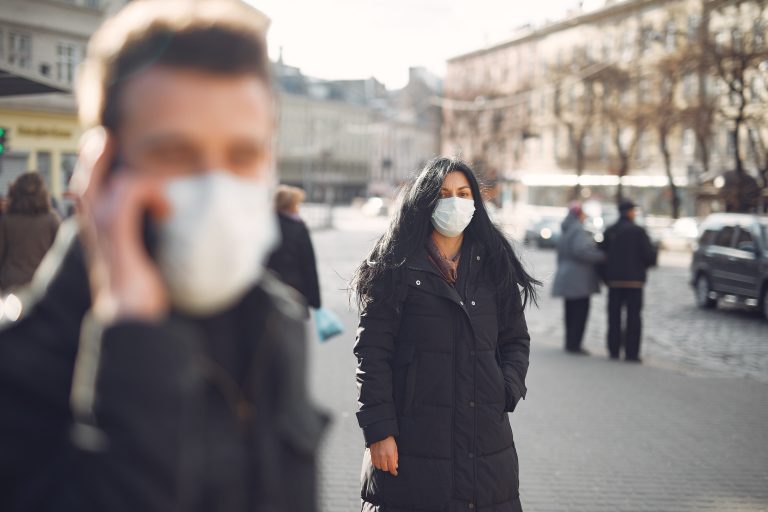The COVID-19 pandemic has forever changed the way we work. Transmission in offices has caused widespread outbreaks and shutdowns of businesses, impacting employee health and financial productivity. Most companies cannot afford another setback.
Protecting employees is critical in effectively preventing the spread of COVID-19 in the office. To manage risks associated with the pandemic, companies can develop corporate surveillance testing programs to ensure their workforce remains safe. Corporate testing programs are affordable, reliable and require a few simple steps to be executed effectively. By offering group testing, employers can build trust and demonstrate that they are proactively taking care of their team members.
What Is Corporate Surveillance Testing?
Surveillance is defined as testing at a group level. In response to the COVID-19 pandemic, the CDC developed surveillance guidelines for the workplace. Surveillance programs enable organizations to identify and isolate positive COVID-19 cases in real-time at a company’s offices, warehouses or other facilities. While PCR tests can be costly and take several days to produce results, surveillance programs using affordable, rapid and highly accurate antigen tests allow companies to test at a group level, and isolate positive COVID-19 cases quickly.
Surveillance testing is different from diagnostic testing or screening. Surveillance testing gathers information at a population level, and serves as a warning system to flag potential COVID-19 cases. Because surveillance is not used to diagnose COVID-19, only to ID potential cases for outside testing, employers can avoid the complex and costly restrictions, certifications and medical expertise required for diagnosis. However, there are limitations and potential drawbacks to the CDC guidance. For this reason, many companies have transitioned to self-screening on a voluntary basis. In contrast to surveillance, self-screening is lower maintenance but is less proactive and relies on employees to voluntary request testing.
Employees are encouraged to participate in testing programs in exchange for access to free, high sensitivity tests and a paid quarantine period if an employee tests positive through the program. The key to a successful testing program is using a high sensitivity (95% or higher) antigen test. The most sensitive rapid antigen tests can catch cases early – before they become contagious.
The Impact of Corporate COVID-19 Testing
It’s important to balance employees’ privacy with protecting the workplace from a COVID-19 outbreak. Because of this, it is effective to regularly test employees in groups. The groups should be based on a common factor – shared locations, departments or common shift schedules. Testing can be conducted around routine time intervals, event triggers (i.e. if an employee reports COVID-19 symptoms), random selection, or a combination of all three depending on the needs of each workplace. Each organization is unique and should customize their surveillance needs based on their size, type of work or industry. For example, time intervals can vary based on needs and population size. Larger organizations may choose to test twice a week and others only once a week.
If an individual is reporting symptoms, it is important not to single them out. In these situations, it is still essential that all surveillance testing is done at the group or population level. In this case, the individual along with their group can be tested all at once. If a positive case comes up, the testing group is expanded to the next logical group until there are no new positive cases, or the entire company has been tested. According to the FDA, Human Resources or management should monitor test results.
Finally, it is important to have a formal protocol in place for positive cases. If an individual tests positive, confirmatory PCR testing from a healthcare provider is the next step. Having a thorough, transparent process instills confidence in employees that their employer is working proactively to keep them safe. These processes can also be helpful in giving employees peace of mind when returning to the office after working from home.
Testing Is Even More Critical Post-Pandemic
As mask mandates and other COVID-19 precautions are eased throughout the country, testing is more important than ever. Without these precautions, the virus can spread more quickly, turning one case into dozens or hundreds. For that reason, COVID-19 testing using a high-sensitivity antigen test is essential for creating a safe work environment post-pandemic – especially as COVID-19 variants are being detected.
Even as more people become vaccinated, we must keep in mind that COVID-19 immunity, from past infection or vaccines, is not permanent. Ongoing research is being conducted to evaluate the duration of immunity, and levels of neutralizing antibodies vary for every individual. In addition, employers should also develop a strategy for immunity monitoring.
Individuals that have previously tested positive for COVID-19 or have been vaccinated can benefit from regularly utilizing neutralizing antibody tests. Neutralizing antibodies are the specialized group of antibodies that physically block the virus from infecting cells. Employers may consider offering neutralizing antibody monitoring as a way for vaccinated or previously infected employees to opt out of antigen surveillance testing. As long as a person can demonstrate that they have detectable neutralizing antibodies, they may be excluded from surveillance groups.
Creating a plan for workplace COVID-19 testing is crucial to keep employees safe and healthy. Testing keeps offices open and businesses functioning at their highest productivity level. Corporate surveillance testing programs are simple to set up and facilitate; building trust and confidence between employers and employees.
Barry Abraham is the President and COO of Empowered Diagnostics.













